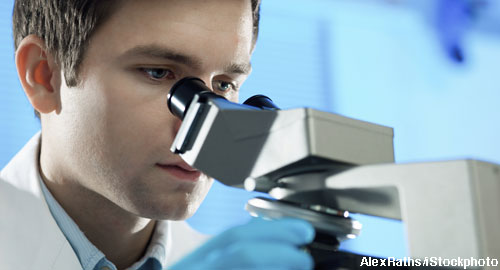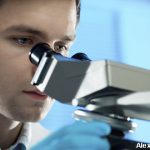 Until now, scientists have assumed autoimmunity is avoided when T cells restrict the maturation of B cells that have autoreactive B cell receptors (BCRs). This assumption has been turned on its head by detailed research from Soren E. Degn, PhD, a postdoctoral fellow at Harvard Medical School in Boston, and colleagues. The team followed the natural history of autoreactive germinal centers in vivo, and their data provide insight into the breaking of self-tolerance and the maturation of the self-reactive B cell response. Additionally, the research helps contextualize the epitope spreading observed in autoimmune diseases, such as lupus. The investigators published their work in Cell on Aug. 24.1
Until now, scientists have assumed autoimmunity is avoided when T cells restrict the maturation of B cells that have autoreactive B cell receptors (BCRs). This assumption has been turned on its head by detailed research from Soren E. Degn, PhD, a postdoctoral fellow at Harvard Medical School in Boston, and colleagues. The team followed the natural history of autoreactive germinal centers in vivo, and their data provide insight into the breaking of self-tolerance and the maturation of the self-reactive B cell response. Additionally, the research helps contextualize the epitope spreading observed in autoimmune diseases, such as lupus. The investigators published their work in Cell on Aug. 24.1
The researchers used a mixed chimera mouse model that contained spontaneous, autoreactive germinal centers composed of wild type B cells, as well as 564Igi B cells that target ribonuclear complexes and are capable of initiating autoimmunity. The knockin BCR can be identified in the mice by using anti-idiotype (Id) antibody staining. The researchers followed the mice as they grew and developed their immune systems, finding that at 6 weeks old heterozygous 564Igi mice had robust germinal center B cell populations in spleen and cutaneous lymph nodes. However, they were surprised to discover that Id+ cells were underrepresented in germinal centers relative to the circulating repertoire.
“We made the unexpected observation of widespread epitope spreading in the 564Igi model,” write the authors in their discussion. “In heterozygous 564Igi mice, upward of half of circulating naive mature B cells carried an affinity matured autoreactive BCR derived from the knockin. Yet these cells failed to win in the [germinal center] reaction, giving way to [wild type]-derived cells.”
Researchers then investigated the trajectory of frequencies of Id+ and Id- cells and confirmed that high numbers of wild type-derived B cells were included—not only in the germinal center, but also in downstream plasma and memory cell populations. They concluded that the B cells had undergone somatic hypermutation, which is classically associated with germinal center responses. Thus, a single autoreactive B cell clone was able to drive expansion of wild type B cells in germinal centers.
In heterozygous 564Igi mice, the spontaneous germinal centers primarily contained germinal center B cells with wild type-derived BCRs. The autoreactive germinal centers were polyclonal and evolved toward pauciclonality at varying rates. The most prevalent V segment accounted for approximately 20% of the total sequences, the second most common accounted for approximately 15% and the third most common for 7% of the total sequences. Thus, many of the B cells in the germinal center were distinct from the initial clone and evolved toward dominance of individual clone lineages in a way that was indicative of affinity maturation.

